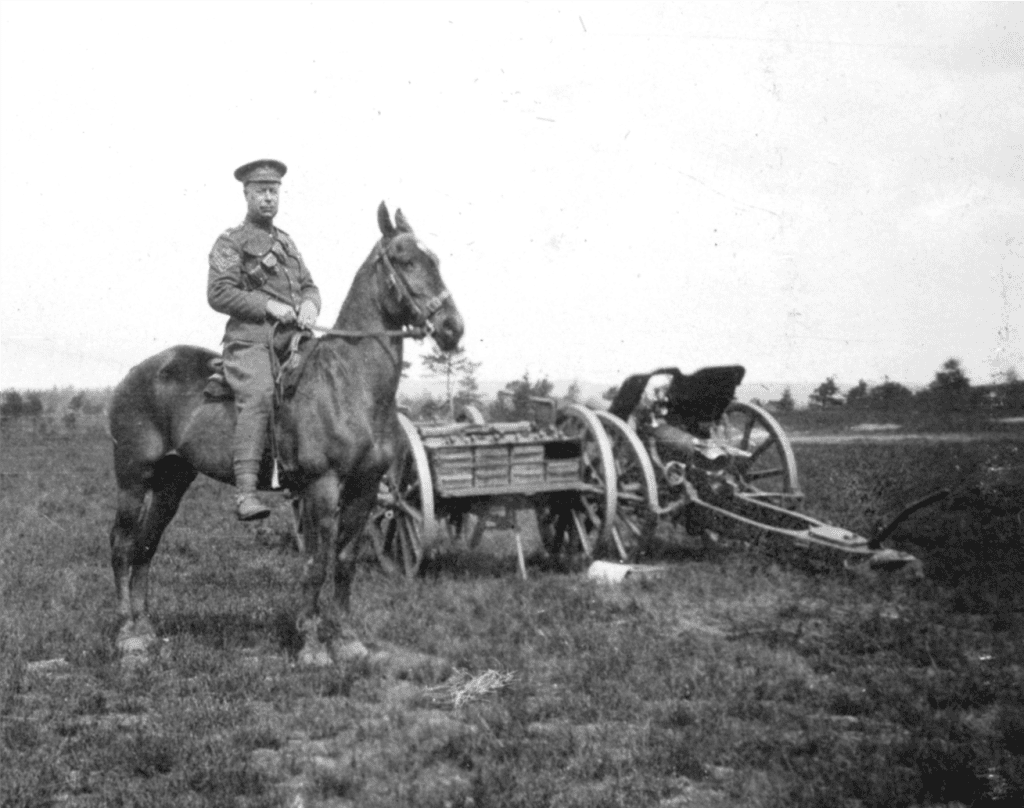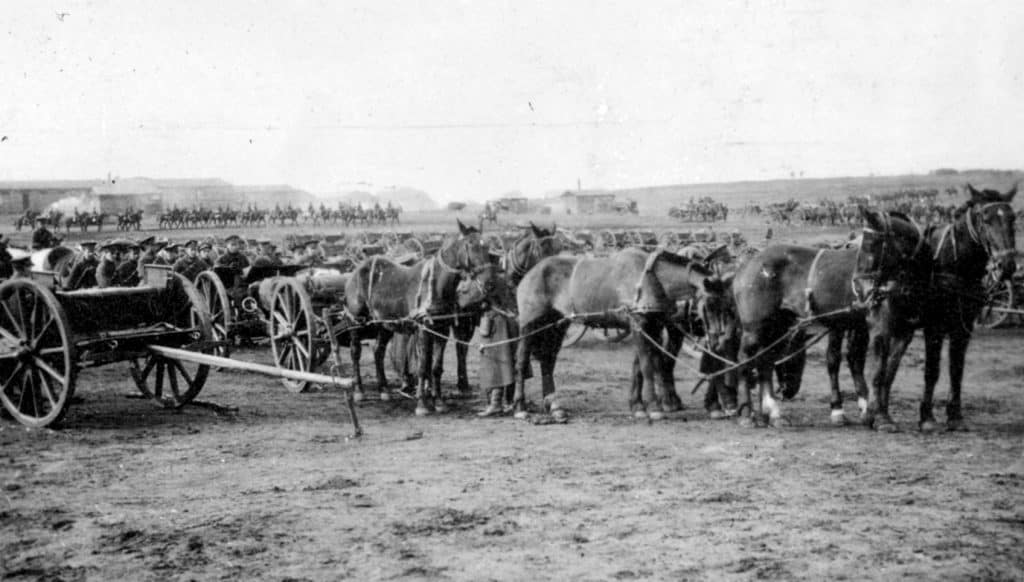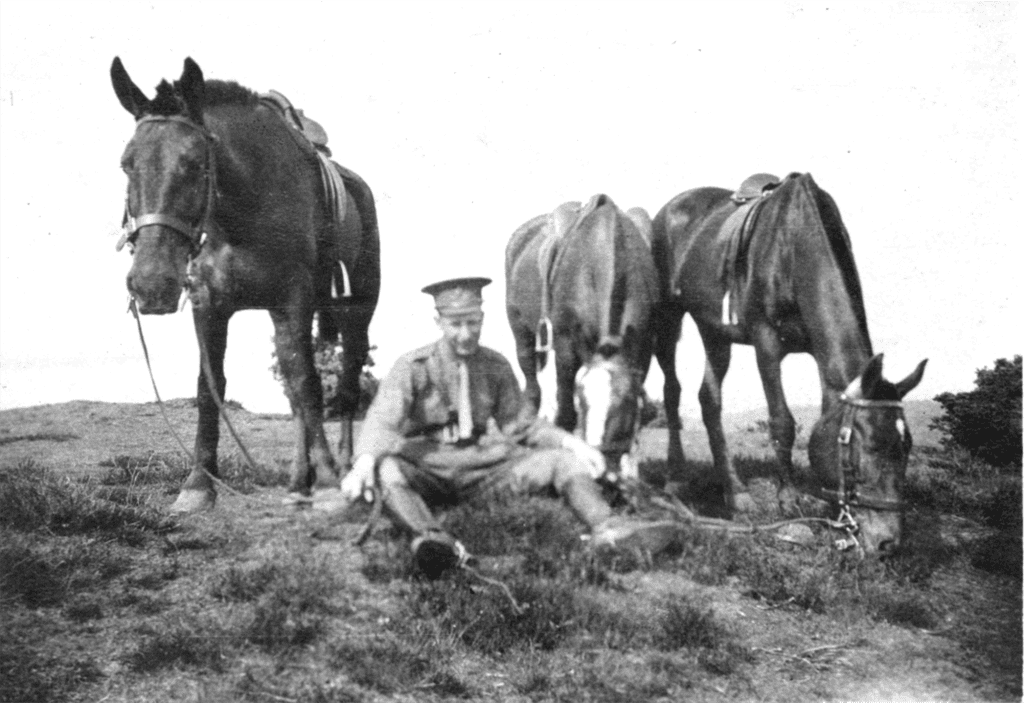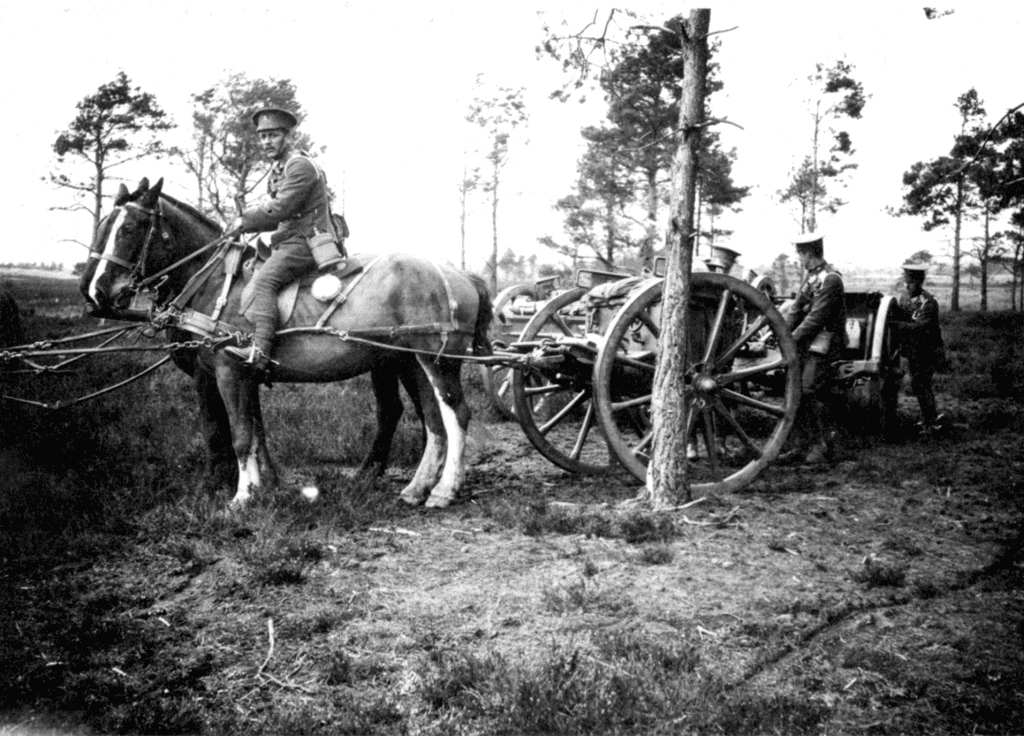Horses In The Canadian Military
The RCA Museum displays two realistic-looking, life-sized horses that draw the attention of many visitors. Accompanying one of these horses is an artilleryman outfitted in a 1905 Canadian military uniform, demonstrating how far back the relationship between horse and military extends. The proof of these ties also exists in the names of some units honouring the powerful animal, such as the Royal Canadian Horse Artillery and Lord Strathcona’s Horse Regiment, to name a couple.
Artillery and Lord Strathcona’s Horse Regiment, to name a couple. Contemporary horse artillery units started forming in the 17th century in different parts of the world. In these units, the animals would pull light cannons or howitzers attached to two-wheeled carriages called limbers and caissons (the former designed to support the trail of the gun and the latter carrying the ammunition). The main advantage of horse artillery was speed, as the men driving the horses would be able to control the movement of the gun and limber to place them swiftly in their exact desired placement, making adjustments to the firing position quickly. Soldiers unharnessed the horses and brought them to the rear, away from the guns, before firing at the enemy. Most of the men in these units were on horseback, supporting mounted troop units.


During the war, horses were critical in artillery and transportation roles. Throughout the South African War (1899 – 1902), Canada provided the Canadian Expeditionary Force with mounted troops and 50,000 horses. In the First World War, the country sent about 130,000 horses overseas. During the Great War, the military used draft horses (a term to describe large workhorses). Clydesdales were a popular, reliable breed. Men used the palm of their hand to measure horse size, a practice still employed today in some countries. Light draft horses were used to transport supplies, wagons and ambulances, measured 15 to 16 “hands” and weighed up to 1,200 lbs. While heavy draft horses stood over 16 “hands” tall, weighed over 1,500 lbs and pulled heavier guns.
The Canadian government bought these horses and housed them in Remount Depots, where they underwent extensive training and acclimatization to better prepare them for the hostile atmosphere they would soon face overseas. Remount Depots worked near the Royal Canadian Army Veterinary Corps, providing medical care to the animals.
Historians often overlook horses’ roles in the Army, but their importance is significant. Transportation machinery available during the Great War was useless on the notoriously muddy roads of the Western Front. Horses hauled guns, ammunition, and supplies over rugged terrain. Trench warfare made it almost impossible for the Army to use horses in cavalry roles, so they utilized them mostly for transport. The animals surviving the First World War endured terrible conditions such as cramped spaces, damp environments, exposure to poison gas, disease, shelling, and starvation.

Interestingly, in 1943, a British animal welfare advocate named Maria Dickin founded a special medal to recognize and commemorate the significance played by horses in the war effort. The award, known as the “animal’s Victoria Cross,” emphasizes brave horses and other creatures, some posthumously, for their “outstanding acts of bravery or devotion to duty.”

The mechanization of the Army, which happened progressively leading up to the Second World War, lessoned the need for horses. By 1933, motorized vehicles and self-propelled artillery started replacing horses. Presently, the only horses in the military are attached to ceremonial units such as Lord Strathcona’s Horse in Edmonton, Alberta and the Governor General’s Horse Guards in Toronto, Ontario. Even though the Canadian Army has not used horses in active service for a long time, it is impossible to disassociate them from warfare. They deserve respect for their valuable contribution to war efforts and recognition for the hardships they underwent.
